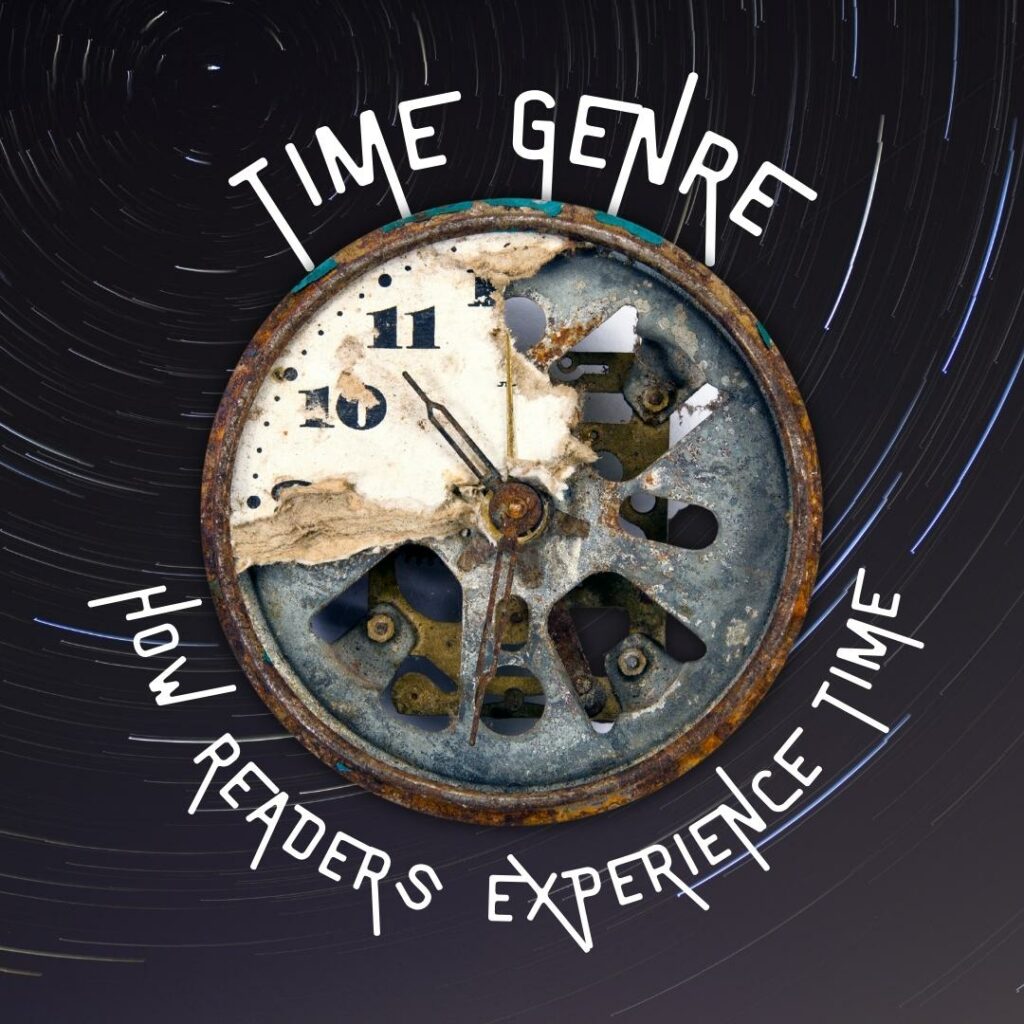What is the Time Genre?
The Time Genre indicates how the reader experiences the time it takes to go from the beginning to the end of your story. It answers how long the story will take to consume.
The Time Genre is one of the five components of the GENRE FIVE LEAF CLOVER, and it’s helpful to remember that GENRE is a label that tells the reader what to expect. With the Time Genre, we are telling the reader what to expect from the length of the story.

3 Categories of the Time Genre
It is best to think of the Time Genre as existing on a spectrum from short form, through medium form, to long form.
However, we do separate stories into the following three general categories.
- Short Form – These are short films, short stories, or individual scenes in a play.
- Medium Form – These are episodic television shows or documentaries, novellas, journalism pieces that span thousands of words, or one act plays.
- Long Form – These are feature length films/documentaries, novels, or plays of three acts or more.
How the Time Genre Affects Your Story
While the Time Genre choice seems straightforward, we must keep in mind the expectations we are setting for the SINGLE AUDIENCE MEMBER (SAM) by the length of the story. We must always respect the SAM’s investment of time in our story and ensure the Time Genre matches the story we are trying to tell.
A Second Dimension to the Time Genre
Our default position inside of Story Grid is to start by thinking how the SAM is experiencing our story. This is why we have the above categories in setting the genre expectations for how long the story will take to consume.
However, it can also be helpful to consider how long the simulation in our story lasts. Another way to think about this is to consider the experience of time for the AVATARS in the story.
Is your story taking place over a few minutes, like the short story Hills Like White Elephants by Ernest Hemingway, or is it taking place across a century, like One Hundred Years of Solitude by Gabriel García Márquez?
Consider these two examples that mix the first and second dimensions of the Time Genre:
- Ulysses by James Joyce is a 265,000+ word Long Form story that the AVATARS experience over the course of a single day.
- A Rose for Emily by William Faulkner is a 3,720-word Short Form story that the spans multiple generations for the AVATARS.
This second dimension of the Time Genre must always be kept in mind by the AUTHOR in order to provide a coherent story to the SAM.
Additional Resources